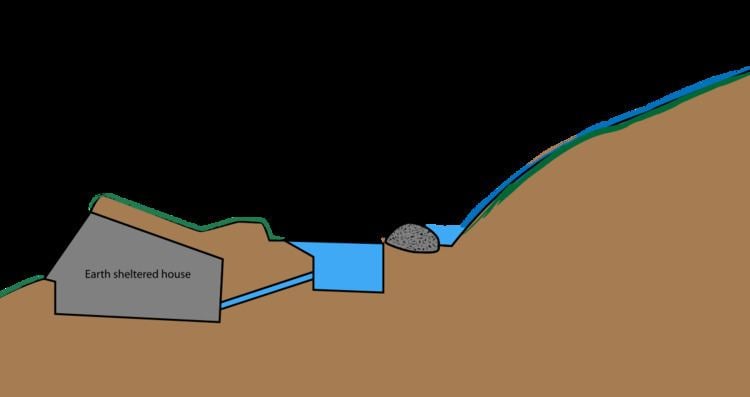 | ||
Stormwater harvesting is the collection, accumulation, treatment or purification, and storing of stormwater for its eventual reuse. It differs from rainwater harvesting as the runoff is collected from drains or creeks, rather than roofs. It can also include other catchment areas from man made surfaces, such as roads, or other urban environments such as parks, gardens and playing fields. Water that comes in contact with impervious surfaces becomes polluted and is denominated surface runoff. As the water travels more distance over impervious surfaces it collects an increasing amount of pollutants.
The main challenge stormwater harvesting poses is the removal of pollutants in order to make this water available for reuse.
Ground catchment systems
Ground catchments systems channel water from a prepared catchment area into storage. Generally they are only considered in areas where rainwater is very scarce and other sources of water are not available. They are more suited to small communities than individual families. If properly designed, ground catchment systems can collect large quantities of rainwater.
